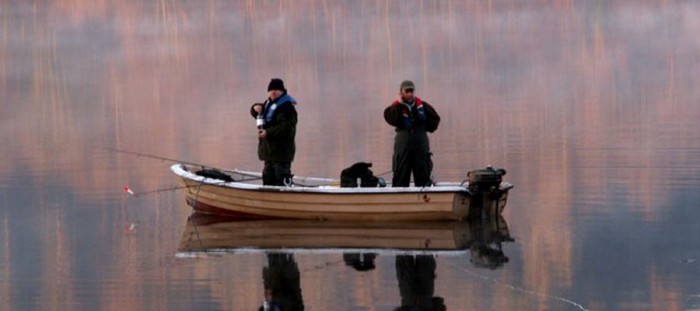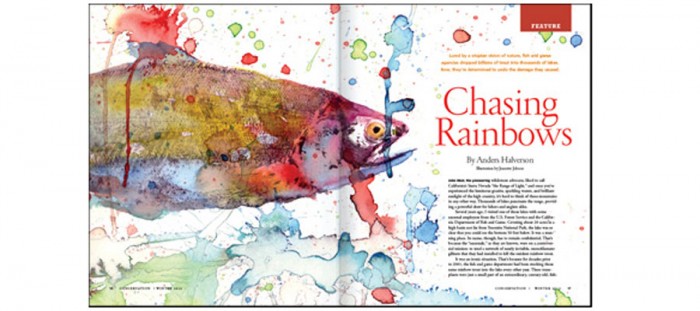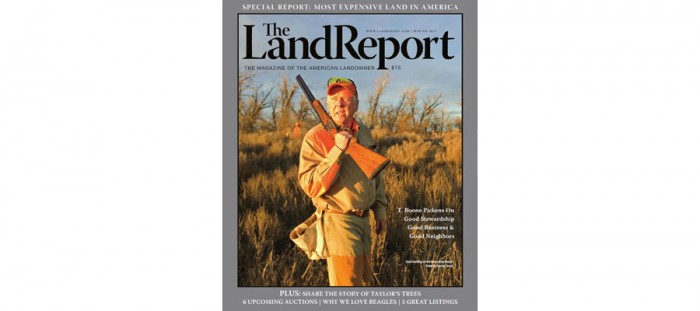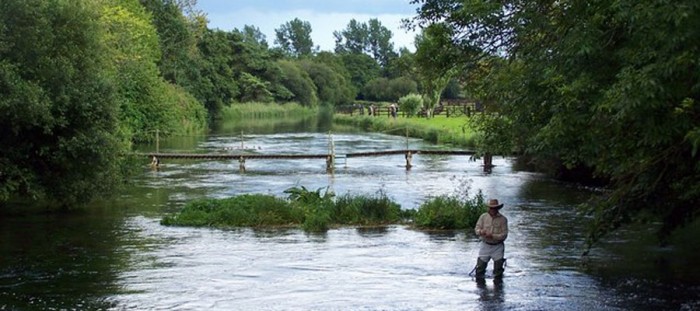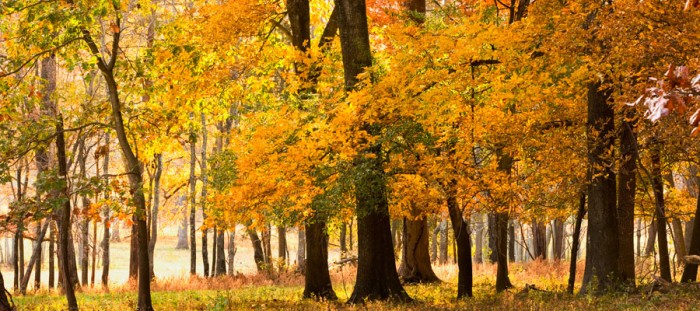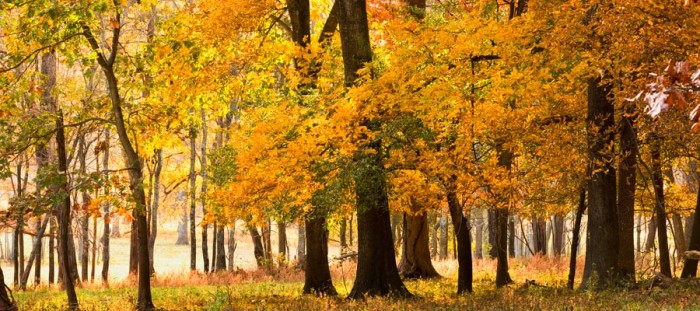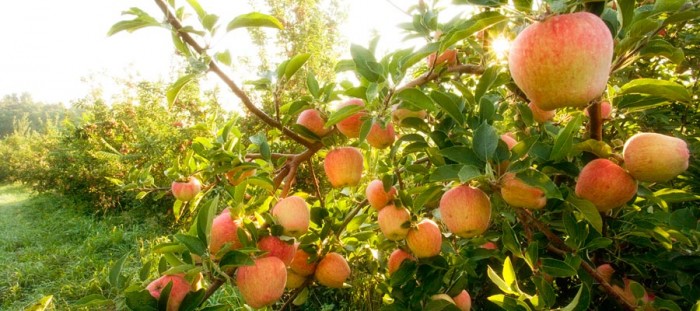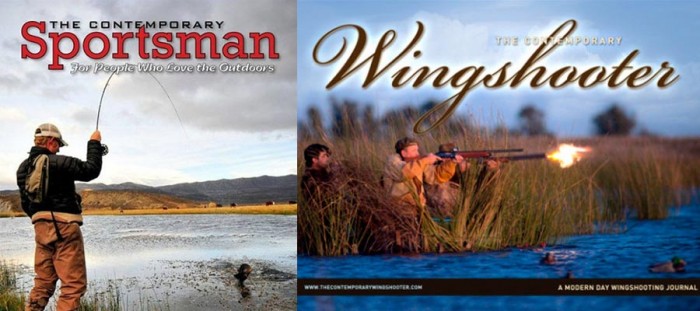Yes, we know it’s January. And yep, we know January falls squarely in the category of “winter.” But winter is typically the season when we find ourselves keeping warm by the fire, thinking longingly about that steelhead we were playing back in October. Hence the title of this post.
We were in one of those reflective moods the other day when we came across this article inThe Contemporary Sportsman. In it, the author, Bryan Huskey, gives a moving account of growing up in Central Oregon surrounded by trout rivers, lakes, and streams. Beginning with his introduction to fly casting for steelhead, he gives a methodical description of his evolution as a fisherman, tying it into the evolution of the sport itself. Looking back at the emergence of two-handed rods, learning the nuances of the water and movement of the fish, and simply taking in the beauty around him, Huskey makes it hard for the reader to not want to get back out on the water.
After checking out Huskey’s stirring words (and photography!), we encourage you to explore the plethora of content within the covers of this latest edition. And once you’re done with that, you might want to consider subscribing to their newest publication,Backcast.
Photo courtesy of John Fielding
What follows is a letter to the editor in response to a recent article in Conservation Magazine titled, Chasing Rainbows by Anders Halverson. “Lured by a utopian vision of nature, fish and game agencies dropped billions of trout into thousands of lakes. Now, they’re determined to undo the damage they caused,” writes Halverson. The article which appeared recently is an adaptation from his recent book An Entirely Synthetic Fish: How Rainbow Trout Beguiled America and Overran the World, published by Yale University Press. Find photos and resources related to fish-stocking at http://andershalverson.com
Dear Conservation Magazine,
We found it incredible that Anders Halverson’s detailed article, about rainbow trout introductions and the unintended consequences (Chasing Rainbows), never mentions the true tragedy of this ecological predicament: the rampant poisoning of entire ecosystems to rid them of planted rainbows.
The same flawed logic of single-species management used to plant the rainbows is now being used to remove rainbows, most often with a systemic poison, Rotenone. Poisoning out non-natives in favor of a preferred native is euphemistically called, native fish restoration. In fact, in many Western states today rainbows are being simultaneously stocked in some places and poisoned in others.
Unfortunately, Rotenone doesn’t discriminate between non-native fish and native fish. It doesn’t spare amphibians or insects. It kills them all and monitoring data show some species never return. Our company has long espoused the Hippocratic Oath of “first, do no harm” as it applies to ecological restoration. We need a strong web of organisms on this planet, not just rainbow trout, or cutthroat trout, or yellow-legged frogs.
Protecting and restoring healthy, functioning freshwater streams and wetlands to sustain a high diversity of organisms is a much more effective and economical way of conserving species. Given half the chance, nature will decide when and where to chase the rainbows.
Read more: http://www.conservationmagazine.org/2011/11/chasing-rainbows/ or learn more about river, stream and lake poisoning at http://www.stopriverkilling.org
[Note: You can check out the original post at THI’s blog, http://troutheadwaters.com/clubecoblu/?p=2603.]
“Good Stewardship, Good Business, Good Neighbors”
Those six words mark the beginning of the cover story of the most recent edition of The Land Report and do a pretty good job of summing up our own feelings toward investing in conservation. You see, investing in such practices as wildlife management, stream restoration, and recreational land use has a plethora of benefits to both people and the natural environment. These include higher biodiversity, improved water quality, and, of course, higher real estate values, to name just a few.
In this particular story, billionaire T. Boone Pickens tells of many of the conservation efforts he has incorporated into his land investment strategy over the years. As he puts it, “We always made a profit from the ranch sales. But what I feel really good about is knowing that we left the land in better shape than we found it.” Indeed, by incorporating wildlife management programs, Pickens was able to promote larger and healthier populations while also profiting off of the increased recreational values of the land.
Further, Pickens was also astute at determining the highest and best use for his and surrounding properties. For example, when a colossal reservoir was discovered beneath the surface of his land in Roberts County, Texas, he recognized that rather than using that water to support irrigation-intensive agricultural practices, he decided to sell the water credits to local urban centers and instead allow the land to lie fallow. In return, he not only profited off the sale of the water credits but also received tax benefits by placing his land into a conservation reserve program, and the land was allowed to return to pristine prairie.
You can read more about T. Boone Pickens and his conservation efforts by clicking here (begins on page 38). While you’re reading, make sure to check out the stunning photography by friend of Field Sport Concepts, Wyman Meinzer. And if you’d like a sample of our approach to investing in conservation, you can view a presentation given by FSC principal Bob McKee of McKee Carson at the 2011 Virginia Environmental Assembly by clicking here.
We hope everyone had a relaxing holiday season! We sure did, but we’re also incredibly excited to get 2012 started.
Now that you’re all caught up on your email and are getting settled back into your daily routine, isn’t it time for another vacation? Maybe not, but how about a five-minute break? We’ve got just the ticket! Our affiliate, Trout Headwaters, is doing some great work at Running Colter Ranch over in Bozeman, Montana and recently released a video documenting their work. Enjoy!
What did one planned community say to the other planned community? ”Oh my gosh, a talking planned community!”
[crickets chirping]
Okay, maybe the title wasn’t supposed to be taken THAT literally. But, we did just come across an article in UrbanLand that discusses the future of planned community development as being driven by a focus on relationships rather than simply on amenities. Whereas the focus of traditional planned communities has been on golf courses, clubhouses, sports complexes, and the like, developers of newer communities are using clustered lot design, community space, and other strategies to promote greater connection among people and to the land itself. Indeed, as one developer put it, “We’re not just stewards of the land; we’re also stewards of people’s lives.”
Perhaps one of the most notable characteristics of future planned communities is they likely will not be characterized by “one size fits all” methods and features. Rather, a successful community will be designed around those features which may be lacking in that particular area. In one area, that focus might be on hunting and fishing. In another, it might be on open space, like parks and hiking trails. And others may be based around other aspects of the sporting life. Whatever the theme, it probably won’t be the same as the planned community in the next town over. In the meantime, we can leave the McMansions to the students.
Photo courtesy of David Martin
For a couple weeks every fall, the trees give us a front row seat to one of the most spectacular shows in nature. Whether you’re still enjoying the performance or taking in the cool, crisp air as you rake up the now-fallen leaves, it’s the perfect opportunity to take in the splendor of the natural world. We encourage you to get out there on the trails or build up a pile of leaves for the kids (and yourself) to jump into!
In this edition, you’ll find a number of stories about efforts by the affiliates at Field Sport Concepts to reach out to the local community, some of our most recent work, and ideas for repurposing underutilized golf courses. We have been busy further developing our social media presence, giving you even more opportunities to learn about our mission on Facebook, Twitter, LinkedIn and by subscribing to our blog. And as always, if you know anyone who might benefit from our services, please consider forwarding this newsletter along to them.
Company News
Appreciating the potential of this dilapidated barn, FSC affiliate Blackburn Architects converts an eyesore into the AIA award-winning Party Barn. Read more…
Field Sport seeks to add regional representatives to its team in an effort to serve a broader range of clientele. Read more…
Staff at FSC affiliate McKee Carson volunteer to help high school students prepare for the 2012 Canon Envirothon. Read more…
FSC founding principal, Bob McKee, introduces economic opportunities for landowners at 2011 Virginia Conservation Assembly. Read more…
Our Expertise
With a record number of golf courses closing, communities nationwide have an opportunity to thoughtfully repurpose the open space to create amenities that will serve residents long into the future. Read more…
We are eager to collaborate with you as you seek to enhance your holdings and/or service offerings. Click below to learn how we can help you.
– Field Sport Enthusiasts
– Farm & Rural Land Owners
– Conservations
– Ranch & Farm Brokers
– Equestrian Enthusiats
– Land Developers
In the Field
Securing the Legacy – Combining spectacular photography with informative commentary, Wyman Meinzer tells of Texas Tech’s program to prepare students to protect the land for generations to come. Read more…
Scouting for Cover – With online publications like The Contemporary Sportsman andThe Contemporary Wingshooter, Jim Stenson is providing the future of outdoor literature dedicated to field sport enthusiasts. Read more…
The Working Subdivision – Often called “the new golf,” agriculture has become the new must-have amenity among homeowners and residential developers. Read more…
To learn more about our services and our unique approach to rural land conservation, please contact us. In the meantime, for all those who study and love ecology, we hope this clip from some students at Antioch University will lighten your day.
And back to the topic of falling leaves, we encourage anyone who is contemplating any land planning projects in the next year to consider photogrammetry before the snow starts falling. The optimal time to have your land flown is right after the leaves fall but before it snows so that you can see the greatest detail. If you might be taking on any projects in the near future, we are eager to assist you in coordinating this process.
If you have any questions or comments or would like more information on how we can serve you, please do not hesitate to contact us. We appreciate your readership and look forward to hearing from you!
All the best,
Bob McKee
Check your email! In it should be a copy of the latest newsletter from Field Sport Concepts. It’s got a bunch of great content, including stories about barn restoration (trust us, the barns we restore make the other barns jealous), our efforts to educate the local community about current environmental issues, and our unique approach to converting overgrown golf courses into community amenities. And that’s just the start!
But, what’s that you say? You can’t find the newsletter in your inbox? Never fear! For those 5 or 6 of you who aren’t yet enjoying our quarterly newsletter, you can check it out by clicking here. If you enjoy the content (we’re confident you will), you can subscribe by visiting our website.
Thanks to everyone who has been checking out our posts! If you have any feedback, we’d love to hear from you!
We would like to introduce you to another friend of Field Sport Concepts, Wyman Meinzer. Mr. Meinzer is the Texas State Photographer and has a number of wonderful videos documenting the beauty of the Texas landscape. One of his videos, “Securing the Legacy,” documents the critically important work of the Natural Resources Management program at Texas Tech University. Instructing the students in both the ecological history of Texan ecosystems as well as proper management of it is range of ecosystems, the program prepares students to serve as environmental stewards for generations to come. We invite you to check out the video below.
Carrots, oregano, and beets.
Well, maybe it’s not entirely that simple. You should probably add lettuce, potatoes, and corn as well. And berries.
The point is, developers are finding that some of the most successful residential and commercial developments are those that include a long-term commitment to local agriculture. While many developments centered around culs-de-sac and strip malls have been put on hold, those that include community farms, farmer’s markets, and other local food-based amenities are moving full steam ahead.
In fact, at the recent Urban Land Institute (ULI) 2011 Fall Meeting in Los Angeles, the sheer power of the local food movement was put on display. Speaker after speaker demonstrated how by including local food in their development, they saw significantly higher property values with lower capital investment than traditional residential and commercial developments.
In one example, a resort developer in Hawaii included a 22-acre farm on a recently completed luxury residential resort. He is now finding that the farm is having a big impact on sales and marketing, especially when considering it cost 1/100 the price of a traditional golf course, clubhouse, and spa. In another example, Bundoran Farm in Albemarle County, Virginia is a conservation community designed around a low-density residential development and a working farm. Benefiting from drastically lower infrastructure costs as a result of the use of on-site management of stormwater runoff, the developer is also seeing lots selling for $250,000 to over $1 million.
We encourage you to read more about agriculture-centered developments and would love to hear from you should you have any questions!
This past week, we were introduced to a leader in the world of field sport literature by the name of Jim Stenson. Having recognized that the future of outdoor literature publications is in online media, he has spearheaded the development of a number of online periodicals dedicated to educating and entertaining the world of field sport enthusiasts. These include such magazines as The Contemporary Sportsmen, The Contemporary Wingshooter, andBackcast (forthcoming). In both The Contemporary Sportsmen and The Contemporary Wingshooter, readers can enjoy the familiar page-turning feel of a traditional magazine while also benefiting from the global access of online media.
In one of our favorite articles, “These Are Our Good Old Days,” the author tells of his struggles to scout for grouse and woodcock covers in this increasingly urbanized (and suburbanized) landscape. After spending most of his life living in the suburbs of Boston, William G. Tapply decided to flee to a small village in New Hampshire. As he writes, “For once in my life, I wanted to be able to spend the hunting season in the woods, not in the car.”
What makes this article so engaging, though, is not just the story itself, but rather the ways in which Tapply is able to paint such vivid image of “the good old days.” Describing days of simply walking westerly because “the whole countryside was one big grouse cover,” taking time to sit back and savor the moment, and enjoying the simple pleasures of the outdoors, Tapply makes it easy for the reader to get lost in his world. When contrasted with today’s ever-quickening pace, it is certainly a welcome respite.
We encourage you to check out the rest of the beautifully-written articles contained in these periodicals. And should you find yourself wanting to develop your own covers, please do not hesitate to give us a shout!

